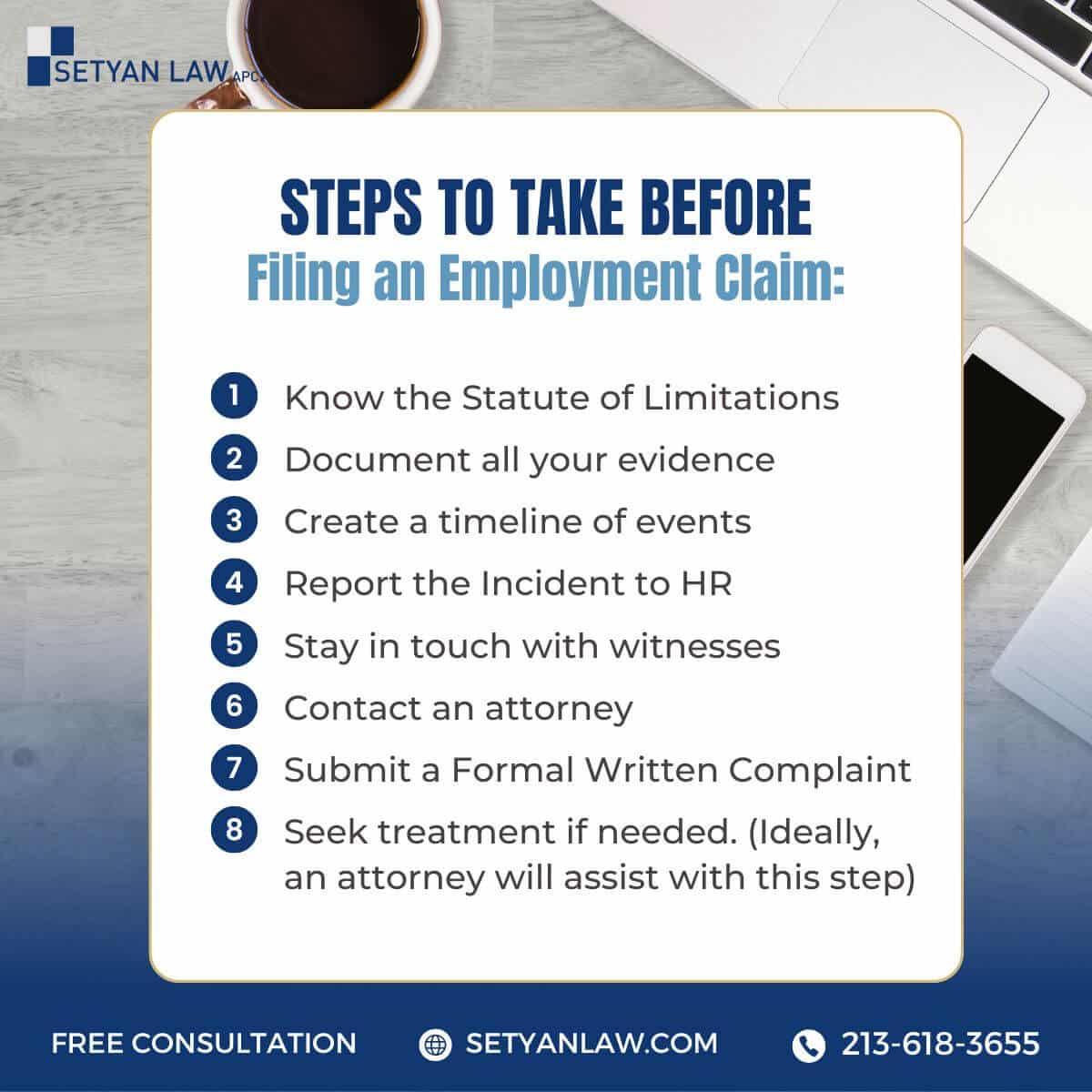Updated October 28, 2025
Class Action Lawsuits
Receiving an invitation to join a class action lawsuit against your current employer can place you at a crossroads. On one hand, you recognize the potential for compensation for workplace injustices; on the other, you worry about possible repercussions in your ongoing employment relationship. This dilemma affects countless workers across the nation, particularly in states with robust worker protection frameworks like California law provides. Understanding your rights, the potential benefits, and the possible risks involved in such legal proceedings is crucial before making this significant decision.
Many employees hesitate to pursue legal action while still employed, fearing retaliation despite legal protections against such behavior. However, class action lawsuits offer a unique opportunity to address systemic workplace issues collectively, potentially creating meaningful change for yourself and colleagues. Whether the issue involves unpaid wages, discrimination, or other workplace violations, knowing how to navigate this complex terrain can empower you to make an informed choice that protects both your immediate employment and your long-term rights.
Understanding Class Action Lawsuits in the Workplace
Class action lawsuits represent a legal mechanism allowing multiple individuals with similar grievances to consolidate their claims into a single case. In workplace contexts, these lawsuits typically arise when numerous employees experience comparable harms from the same employer practice or policy. Rather than each affected worker filing separate litigation, representative plaintiffs bring forward the case on behalf of all similarly situated employees.
The fundamental premise behind workplace class actions centers on efficiency and accessibility. By combining resources and legal representation, employees gain collective strength that might otherwise be unattainable individually. This approach proves particularly valuable when addressing systemic issues like wage theft, discrimination patterns, or widespread labor violations that affect substantial portions of a workforce.
For a workplace dispute to qualify as a class action, certain criteria must be met. Courts typically require that the group of affected employees be sufficiently numerous, that common legal or factual questions exist across all claims, and that the representative plaintiffs adequately represent the interests of the entire class. Additionally, courts must determine that resolving the issues collectively offers advantages over individual litigation.
Class actions in employment contexts frequently address violations such as unpaid overtime, improper employee classification, workplace discrimination, denial of benefits, and failure to provide legally mandated breaks or accommodations. Under California law, these protections are particularly robust, offering employees significant recourse against unfair workplace practices through collective legal action.
The Dilemma: Joining a Class Action While Still Employed
Participating in legal proceedings against your current employer creates an undeniable tension. Many workers report experiencing anxiety about potential workplace consequences despite legal safeguards against retaliation. This concern often stems from practical realities – while retaliatory actions are prohibited, subtle workplace changes can be difficult to document or prove as retaliatory.
The psychological impact of this decision warrants consideration as well. Continuing to work in an environment where you’ve taken legal action against your employer can create interpersonal strain and discomfort. Some employees report feeling ostracized by management or colleagues who view their participation in litigation as disloyal, even when the underlying claims have merit.
However, class action participation offers certain protections that individual lawsuits may not. As one among many plaintiffs, your individual involvement may be less visible than if you were pursuing a solo claim. Many class members remain relatively anonymous throughout proceedings, with only representative plaintiffs taking more active roles in the litigation process.
Timing considerations also factor into this decision. Statutes of limitations restrict how long employees have to bring forward certain claims, meaning that waiting until after your employment ends could potentially forfeit your right to seek compensation. Understanding these timeframes under California law is essential when weighing whether to join ongoing litigation while still employed.
Benefits of Joining a Class Action Against Your Employer
Participating in collective legal action offers several significant advantages over pursuing individual claims. Perhaps most importantly, class actions distribute legal costs across numerous plaintiffs, making justice accessible for claims that might otherwise be financially impractical to pursue individually. When damages for a single employee might be relatively modest, the combined value across an entire workforce can justify the substantial expenses of litigation.
Class actions also create strength through numbers. When multiple employees report similar experiences, their collective testimony carries greater weight than isolated accounts. This consolidated approach can effectively demonstrate patterns of workplace misconduct that might be dismissed as isolated incidents when presented individually. The resulting legal pressure often motivates employers to address systemic issues more comprehensively.
From a practical perspective, joining an existing class action typically requires minimal time investment from most participants. While representative plaintiffs may need to provide testimony or participate more actively, most class members simply need to complete necessary paperwork and await the outcome. This reduced involvement makes participation feasible even while maintaining your current employment.
Perhaps most significantly, successful class actions can drive meaningful workplace reforms. Beyond financial compensation, these lawsuits often result in policy changes, improved compliance measures, and enhanced workplace protections that benefit all employees – including those who continue working for the company after litigation concludes. This potential for systemic improvement represents a powerful motivation for many class action participants.
Potential Risks and Drawbacks to Consider
Despite legal protections, concerns about workplace repercussions remain valid. While California law explicitly prohibits employer retaliation against employees who exercise their legal rights, subtle forms of adverse treatment can be difficult to prove. Changes in assignment distribution, exclusion from advancement opportunities, or shifts in workplace culture may impact your professional experience without constituting clear legal violations.
Financial considerations also warrant attention. Class action settlements typically distribute compensation across all participating members, potentially resulting in individual payouts significantly smaller than what might be obtained through successful individual litigation. This dilution effect becomes particularly relevant in large-scale cases involving hundreds or thousands of employees.
Participating in class actions also means surrendering certain aspects of case control. Decisions regarding settlement terms, litigation strategy, and case progression primarily rest with lead plaintiffs and class counsel. If you disagree with these choices, your options for influencing the proceedings remain limited once you’ve joined the class.
Timeline expectations require realistic assessment as well. Class actions typically progress more slowly than individual cases, often extending over several years before reaching resolution. This extended duration can create prolonged workplace tension and uncertainty while you await the outcome of litigation against your current employer.
Legal Protections for Participating Employees
Anti-retaliation provisions form a cornerstone of employment law, specifically protecting workers who participate in legal proceedings against their employers. Under California law, these protections are particularly robust, prohibiting termination, demotion, harassment, or other adverse actions taken in response to an employee’s involvement in protected legal activities, including class action participation.
Documentation becomes crucial when navigating potential retaliation concerns. Employment law experts recommend maintaining detailed records of performance reviews, workplace communications, and assignment changes before and after joining litigation. These contemporaneous records can help establish patterns of treatment that might later support retaliation claims if necessary.
Confidentiality provisions in many class action proceedings offer additional protection. While employers typically receive notification of the overall litigation, the specific identities of all participating employees may remain protected during certain phases of the proceedings. Understanding the particular confidentiality protections in your case can help assess potential workplace exposure.
Legal counsel can provide invaluable guidance regarding your specific situation. Employment attorneys experienced with class action litigation can help evaluate your individual circumstances, explain relevant protections under California law, and develop strategies to minimize potential workplace disruption while protecting your legal rights throughout the proceedings.
Making Your Decision: Key Factors to Evaluate
The severity and impact of the alleged violations should significantly influence your decision. Consider how substantially the employer’s actions have affected your compensation, working conditions, or professional opportunities. When violations have caused significant harm, the potential benefits of legal action may outweigh concerns about workplace dynamics.
Your long-term employment intentions also warrant consideration. If you anticipate remaining with your current employer for an extended period, potential workplace tension carries greater significance than if you’re already considering transition opportunities. Balancing immediate legal rights against long-term career considerations requires honest assessment of your professional trajectory.
The strength of evidence supporting the class claims should factor into your evaluation as well. Cases with substantial documentation, multiple witnesses, or clear policy violations typically present stronger prospects for successful resolution than those relying primarily on subjective experiences or limited evidence. Understanding the evidentiary foundation can help gauge potential outcomes.
Consulting with independent legal counsel before making your decision provides crucial perspective. While class action attorneys can explain the general case parameters, an independent employment lawyer can evaluate how participation might specifically affect your individual circumstances, helping you make an informed decision aligned with your particular situation and priorities.
Steps to Take Before Making Your Decision
Thoroughly reviewing all provided class action notices represents an essential first step. These documents typically outline the nature of the claims, the proposed class definition, the potential compensation structure, and the timeline for participation decisions. Understanding these parameters provides the foundation for your evaluation process.
Seeking confidential legal consultation offers invaluable perspective. An employment attorney unaffiliated with the class action can provide objective analysis of how participation might affect your specific situation. This independent assessment helps ensure your decision reflects your individual circumstances rather than generalized assumptions about class litigation.
Documenting your current workplace standing creates important baseline evidence. Before making your decision, compile records of recent performance evaluations, promotion considerations, assignment distributions, and other relevant workplace metrics. This documentation establishes your pre-litigation professional status for potential future reference.
Carefully evaluating your financial situation and career trajectory provides essential context for your decision. Consider how potential compensation from the litigation aligns with possible workplace implications, and how these factors intersect with your broader professional goals and financial needs both immediately and long-term.
Conclusion
Deciding whether to join a class action lawsuit against your current employer involves balancing legitimate concerns about workplace dynamics against your right to seek remedy for potential legal violations. While California law provides significant protections for employees who exercise their legal rights, practical considerations about workplace relationships and professional advancement remain valid factors in this complex decision.
By thoroughly understanding the nature of the claims, the structure of class action proceedings, and the specific protections available in your situation, you can make an informed choice that appropriately balances your immediate legal interests with your long-term professional goals. Remember that consulting with independent legal counsel provides the most reliable guidance tailored to your individual circumstances.
Ultimately, workplace justice depends on employees willing to stand up for their rights, whether individually or collectively. Class actions represent a powerful mechanism for addressing systemic workplace issues, but participation decisions remain deeply personal. By carefully evaluating all relevant factors, you can determine whether joining the litigation represents the right choice for your unique situation and priorities.
Need a Lawyer?
Setyan Law is your trusted partner in employment law matters, ensuring your rights are protected in class action disputes. Call us today at 213-618-3655 for a free consultation.







